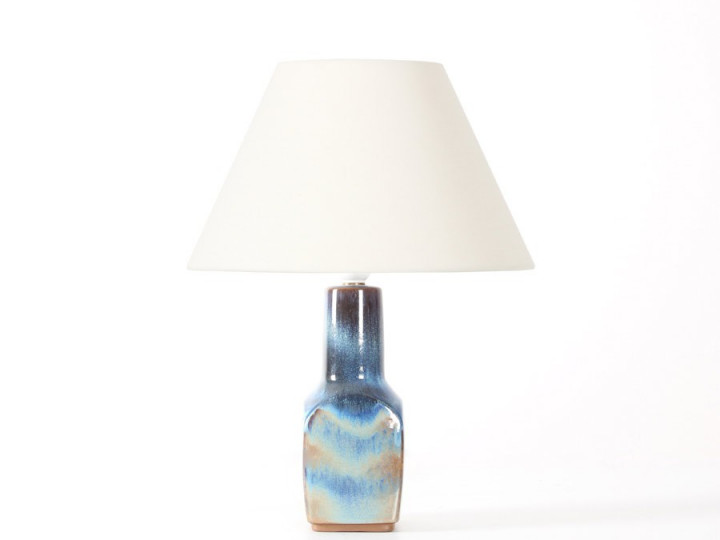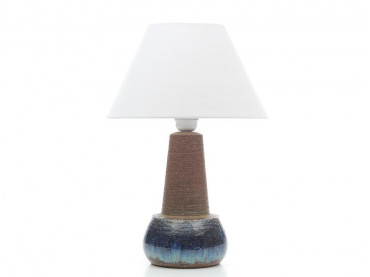| Year | 1960's |
| Condition | Excellent. |
| Dimensions | Base height : 20 cm. |
| Material | Ceramic |
| Style | Classique Vintage |
| Origin | Denmark. |
| Fournisseur | Lyskær Lighting |
Michael Andersen & Son
Michael Andersen Stentøj or Michael Andersen Ceramics, was founded by the Danish pottery maker Jens Michael Andersen (1859-1931) in Rønne, on Bornholm, in 1890. After ended training at ceramics maker Lauritz Hjorth, Jens Michael Andersen took over a highly respected and historic ceramic workshop in Rønne, which had been producing ceramics since 1773, and carried it on, under his own name, Michael Andersen.
His four sons were all educated pottery makers, and worked at the factory in Rønne, which mainly produced kitchenware, figurines, vases and jars – in Ancient Greek or Nordic style. The oldest son, Daniel Folkmann Andersen (1885-1959), was a clear, creative and artistic talent and in the age of 20, he had a fundamental impact on the artistic development of the factory, as he created products in the new art nouveau style – vases with flower or animal decorations and multi-colored glaze. This was a huge success, and helped the company to be one of the most interesting ceramics companies in Denmark, in the early 19th century.
In 1916, the company expanded and changed name to Michael Andersen & Son, as one of the four sons, Emil Folkmann Andersen (1887-?), became partner. Another of the sons, Michael Ejner Andersen, created during the 1920s, two series of majolica products with simple, clean and smooth shapes; Dania and Kobolt.
Jens Michael Andersen, the founder, died in 1931, and at the same time Emil redrew from the company. This meant that Michael Ejner Andersen became the business and commercial manager, Daniel Folkmann Andersen became the artistic director and technical manager, whereas the fourth of the brothers, Pauli Folkmann Andersen remained as plain pottery maker by own choice.
At the World Exhibition in Brussels, in 1935, Daniel Folkmann Andersen won the gold medal for a new glazing technique – the Persia-technique. This emphasized their position as one of leading in creative and innovative ceramic design, in Denmark.
Up through the 1950s and 1960s, the company gradually changed the production to be more commercial, and the product range was expanded with stoneware in the trending functionalistic style, led on by Danish artist Marianne Starck.
In 1993, the Danish Artist ,Solveig Ussing, took over the company and runs it today. Solveig Ussing has worked for the company since she was 14 years old.
Bonus info:
In the 1890s, the company used a stamp with the name Michael Andersen, written in Gothic letters to hallmark their products. Around 1900 to 1916, the stamp changed to using Latin letters, instead of Gothic letters. From 1916 to 1931, the company used a stamp with M.A. & S., but after 1931, the stamp changed to using the town seal of Rønne, depicting three fish inside a triangular crest.
source : danishvintage.design.com





